Related Research Articles
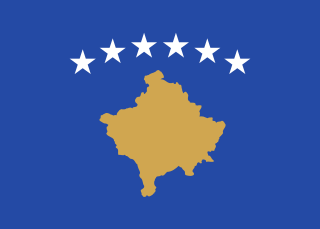
Kosovo, officially the Republic of Kosovo is a country in Southeast Europe with partial diplomatic recognition. Kosovo lies landlocked in the centre of the Balkans, bordered by Serbia to the north and east, North Macedonia to the southeast, Albania to the southwest, and Montenegro to the west. Most of central Kosovo is dominated by the vast plains and fields of Metohija and the Kosovo field. The Accursed Mountains and Šar Mountains rise in the southwest and southeast, respectively. Its capital and largest city is Pristina.
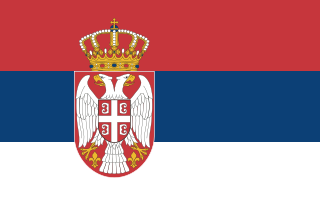
Serbia, officially the Republic of Serbia, is a landlocked country at the crossroads of Southeast and Central Europe, located in the Balkans and the Pannonian Plain. It shares land borders with Hungary to the north, Romania to the northeast, Bulgaria to the southeast, North Macedonia to the south, Croatia and Bosnia and Herzegovina to the west, and Montenegro to the southwest. Serbia claims a border with Albania through the disputed territory of Kosovo. Serbia has about 6.6 million inhabitants, excluding Kosovo. Its capital Belgrade is also the largest city.

Kraljevo is a city and the administrative center of the Raška District in central Serbia. It is situated on the confluence of West Morava and Ibar, in the geographical region of Šumadija, between the mountains of Kotlenik in the north, and Stolovi in the south.
Montenegrin is a normative variety of the Serbo-Croatian language mainly used by Montenegrins and is the official language of Montenegro. Montenegrin is based on the most widespread dialect of Serbo-Croatian, Shtokavian, more specifically on Eastern Herzegovinian, which is also the basis of Standard Croatian, Serbian, and Bosnian.
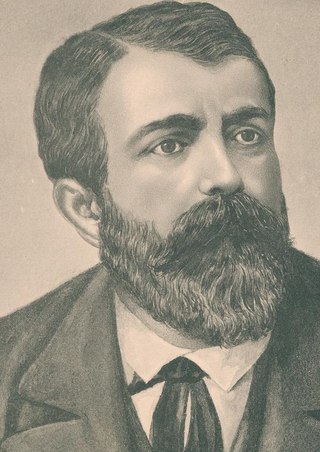
Georgije "Đura" Jakšić was a Serbian poet, painter, writer, dramatist and bohemian.

The University of Belgrade is a public research university in Belgrade, Serbia. It is the oldest and largest modern university in Serbia.

The Central European Initiative (CEI) is a forum of regional cooperation in Central and Eastern Europe, counting 18 member states. It was formed in Budapest in 1989. The body was developed on the basis of earlier experiences with The Alps-Adriatic Working Group. The CEI headquarters have been in Trieste, Italy, since 1996.

Exit is a summer music festival which is held at the Petrovaradin Fortress in Novi Sad, Serbia. Founded in 2000, it has twice won the Best Major Festival award at the European Festivals Awards, for 2013 and 2017. EXIT has also won the "Best European Festival" award at the UK Festival Awards in 2007. In March 2018 Regional Cooperation Council awarded EXIT Festival as Champion of Regional Cooperation for 2017.

Nadežda Petrović was a Serbian painter and one of the women war photography pioneers in the region. Considered Serbia's most famous expressionist and fauvist, she was the most important Serbian female painter of the period. Born in the town of Čačak, Petrović moved to Belgrade in her youth and attended the women's school of higher education there. Graduating in 1891, she taught there for a period beginning in 1893 before moving to Munich to study with Slovenian artist Anton Ažbe. Between 1901 and 1912, she exhibited her work in many cities throughout Europe.
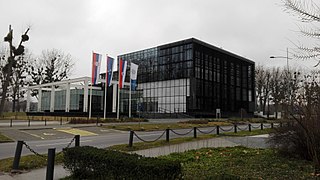
The University of Novi Sad is a public university in Novi Sad, Serbia. Alongside nationally prestigious University of Belgrade, University of Novi Sad is one of the most important educational and research institutions in Serbia and South Eastern Europe and the flagship institution of higher education in Vojvodina. The University of Novi Sad, with almost 50,000 students and more than 5,000 employees, is one of the largest educational and research centers in Central Europe. It belongs to the group of comprehensive universities, which are characterized by providing nearly all fields of science and higher education. It is composed of 14 faculties and three scientific institutes located in four university cities - Novi Sad, Sombor, Subotica and Zrenjanin. Institution belongs to the group of comprehensive research universities with significant level of research activities.

The University of Banja Luka is the second-oldest university in Bosnia and Herzegovina. A public university, it is the flagship institution of higher education in Republika Srpska, one of two entities of Bosnia and Herzegovina. As of 2018–19 school year, there are 11,186 enrolled students.

Bojan Pajtić is a Serbian lawyer and former politician who is a professor at the University of Novi Sad, Faculty of Law. A member of the Democratic Party (DS), he served as the president of the government of Vojvodina from 2004 to 2016 and as the president of DS from 2014 to 2016.

Branko "Stane" Stanković was a Bosnian Serb footballer and manager, from Sarajevo.

The Autonomous Province of Kosovo and Metohija, commonly known as Kosovo and abbreviated to Kosmet or KiM, is an autonomous province defined by the Constitution of Serbia that occupies the southernmost part of Serbia. The territory is the subject of an ongoing political and territorial dispute between Republic of Serbia and the partially recognised Republic of Kosovo, the latter of which has control over the territory. Its claimed administrative capital and largest city is Pristina.
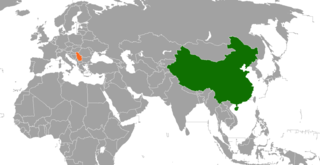
China-Serbian relations are foreign relations between the People's Republic of China and the Republic of Serbia. Relations have been maintained since SFR Yugoslavia's recognition of PR China on October 1, 1949, while diplomatic relations between the two countries were formally established by the exchange of diplomatic notes between the two Foreign Ministers on January 2, 1955. China has an embassy in Belgrade and also maintains an office in Priština based on consent of the Government of Serbia from November 2006. Serbia has an embassy in Beijing and a consulate-general in Shanghai. In 2017, Serbia and China mutually abolished the requirement of obtaining an entry visa for its citizens.

The University of Arts in Belgrade is a public university in Serbia. It was founded in 1957 as the Academy of Arts to unite four academies. It became a university and acquired its current name in 1973.

The University of Priština is a public university in Kosovo with a temporary seat in North Mitrovica.

Dalj High School is a public high school in Dalj, Croatia. The school offers the students the following educational programs: Economist, Commercial Officer, Agricultural Technician and Agricultural Technician General. In accordance with rights derived from Erdut Agreement Serbian minority in this school use right of education in minority language. For this reason, students can attend classes in Croatian or Serbian language and Serbian Cyrillic alphabet.

The Serbs of Vukovar are one of traditional communities living in the multicultural, multi-ethnic and multi-confessional eastern Croatian town of Vukovar on the border with Serbia. The Serb community constitutes slightly over one third of the entire population of Vukovar according to 2011 Census. Other significant communities include the Croat majority, as well as Hungarians, Slovaks, Rusyns, Ukrainians and historically Yugoslavs, Germans, Jews, Vlachs and Turks.
The Red Cross of Serbia is a humanitarian, non-governmental organisation that provides humanitarian aid, disaster relief and education in Serbia. It is the national affiliate of the International Federation of Red Cross and Red Crescent Societies.
References
- ↑ Statute Act on Higher Education Archived 2019-05-31 at the Wayback Machine , Ministry of Education, Science and Technological Development of the Republic of Serbia, Articles 63–72, retrieved 2019-05-07.